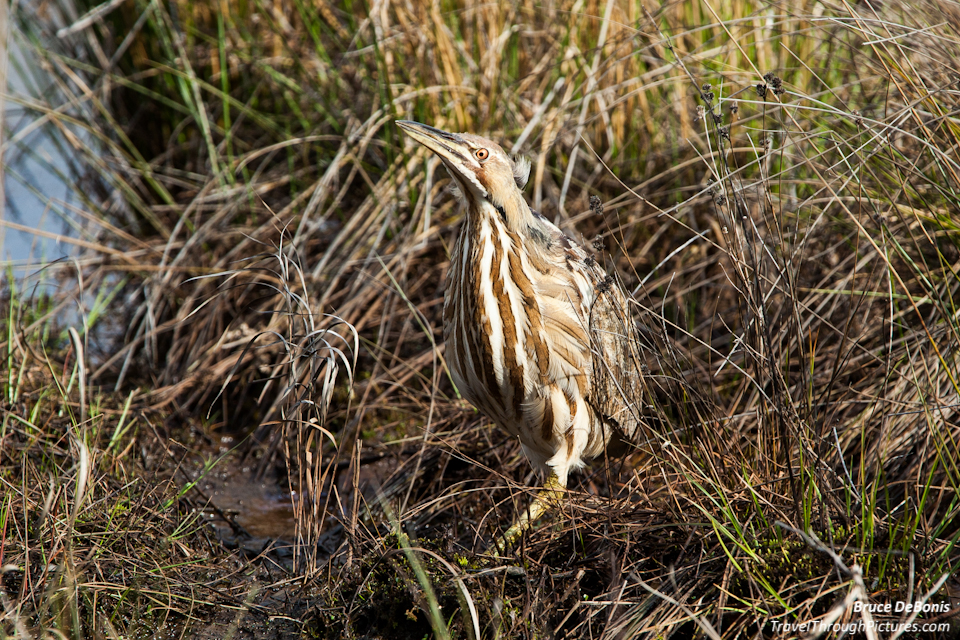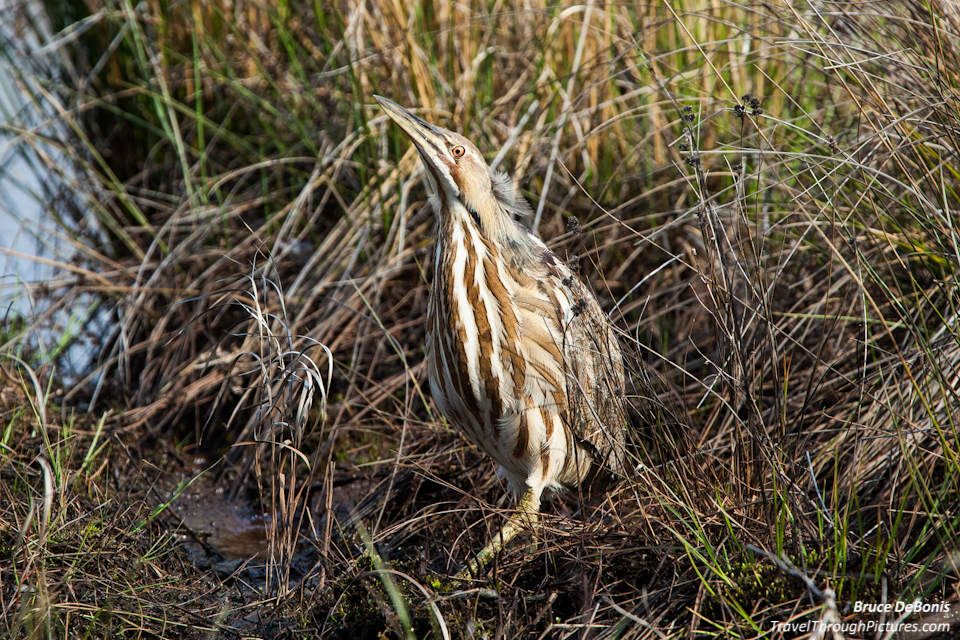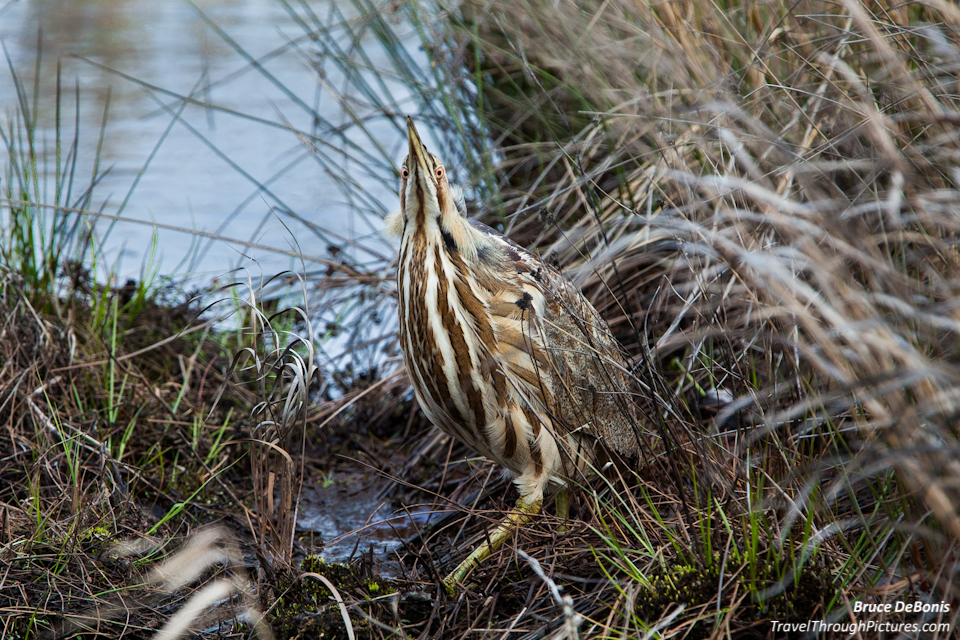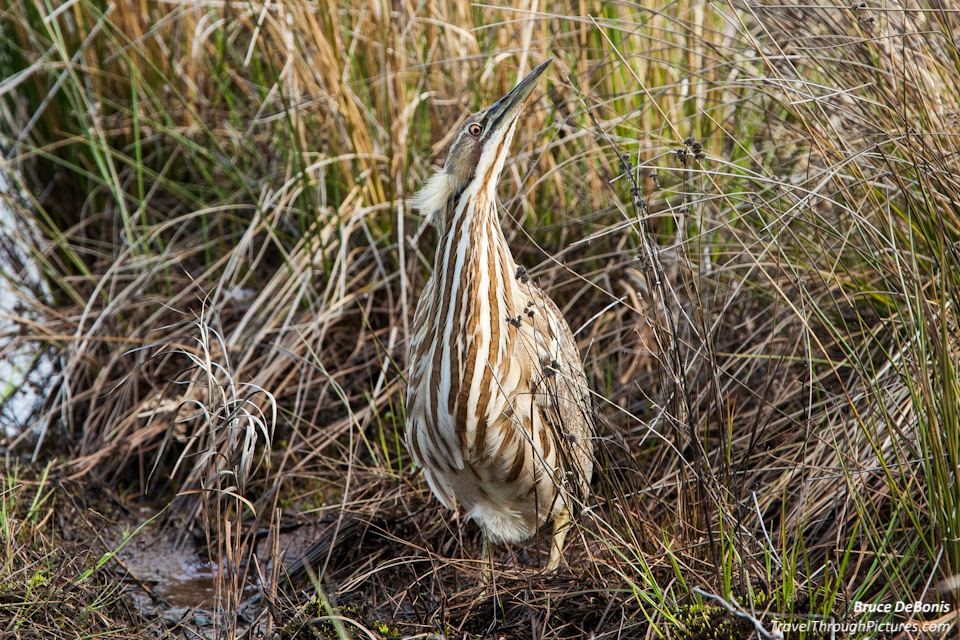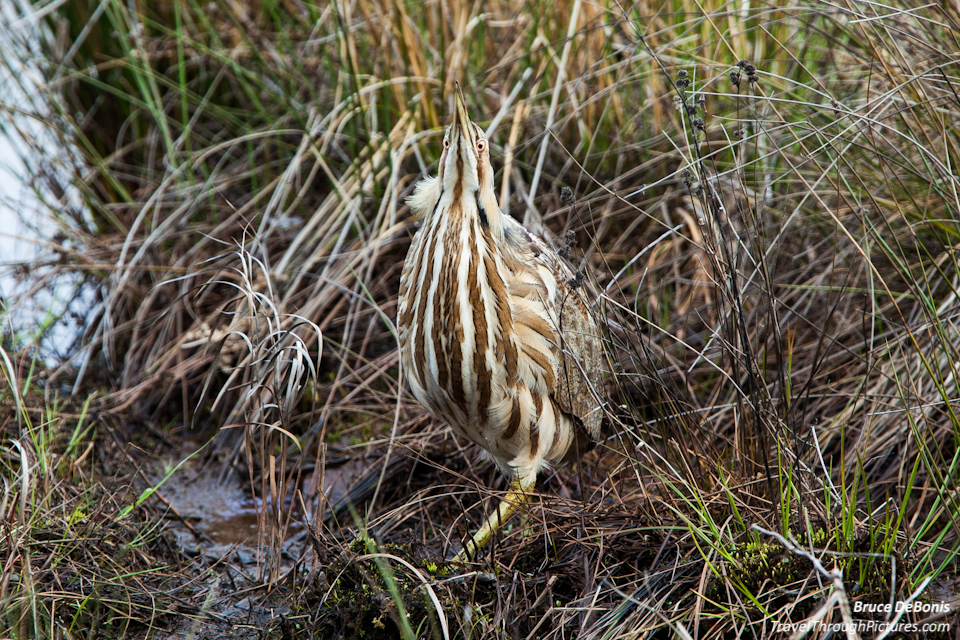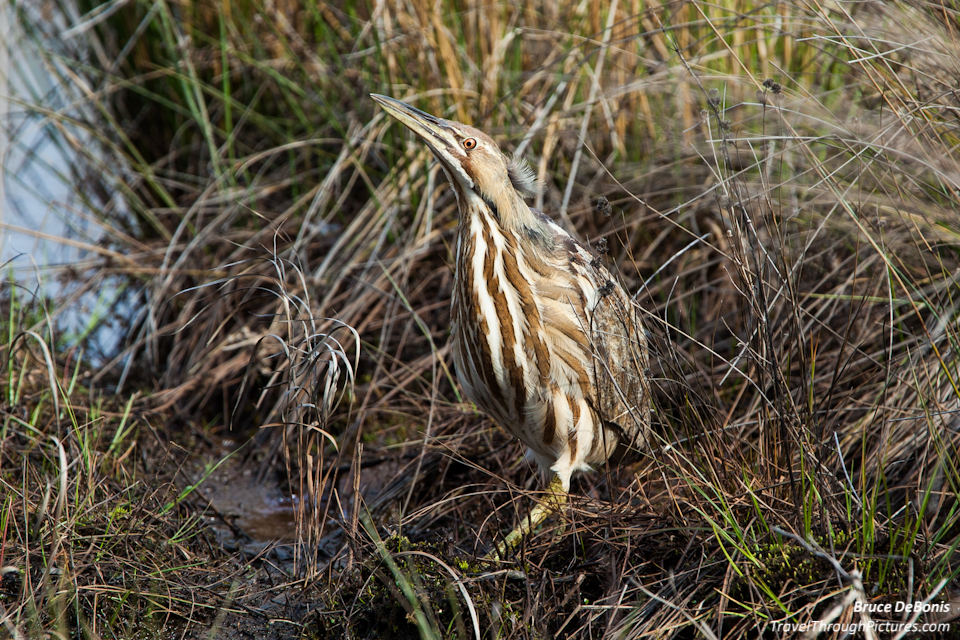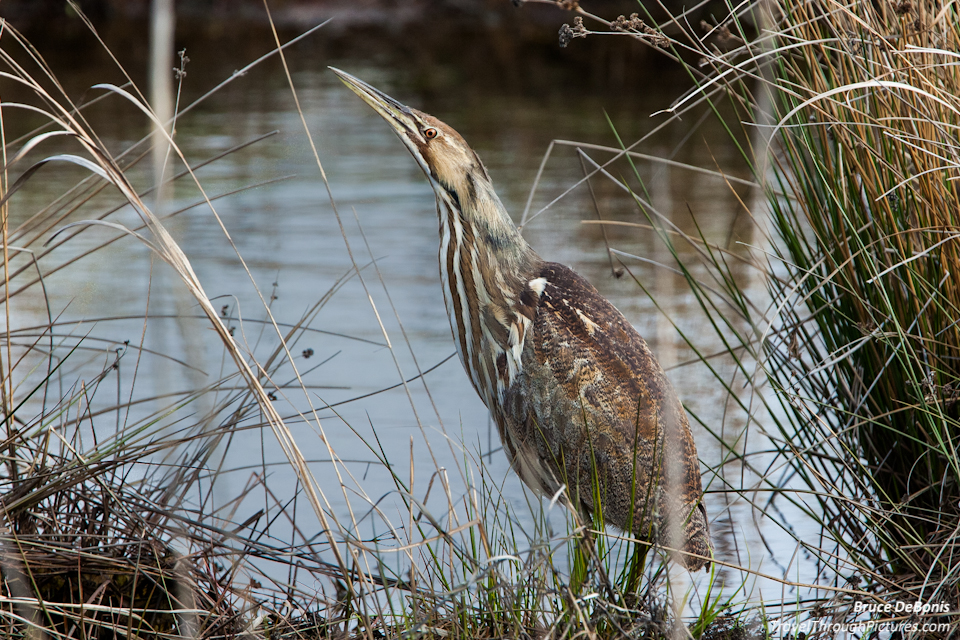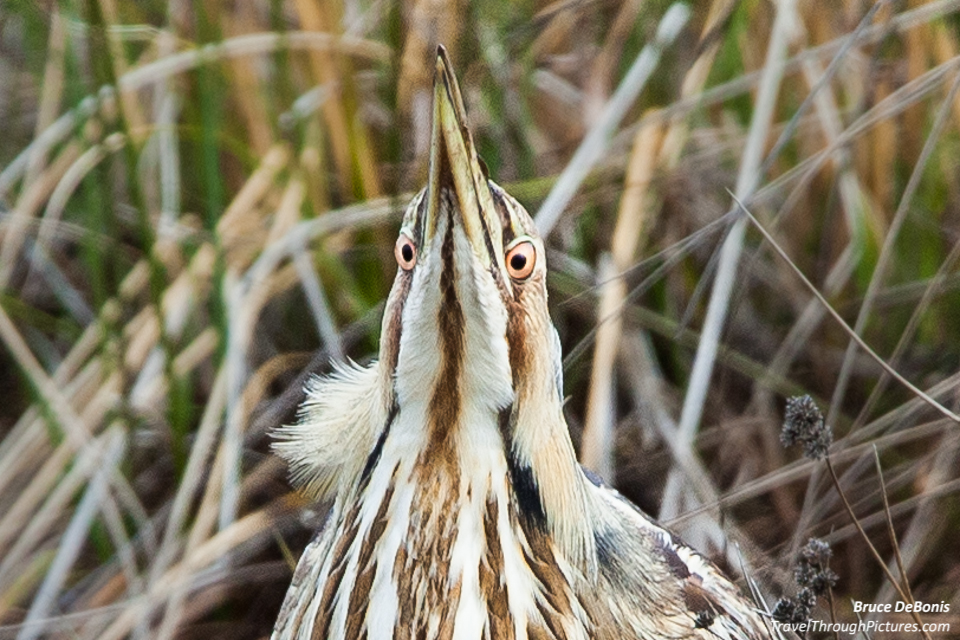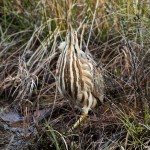American Bittern and 1.4x Teleconverter Review
I’ve been shooting birds now for about three years and only saw this gem once. The American Bittern is one beautiful heron. They hide in the tall grasses and are not easy to find.
I was driving along a salt marsh very slowly, close to the left side of the road, and almost missed this guy. Actually I drove past him and something didn’t look quite right, so I put it into reverse, backed up slowly, and there he was! I was so glad I stopped.
Some answers to very important questions
Before I get into how I got these shots, I want to address some big questions you may have about shooting birds. Over the years, I get asked many questions and many have nothing to do with technology and technique; here are just a few:
- Q: Isn’t this bird photo hobby boring? A: Yes, mostly
- Q: When is it not boring? A: When it is exciting. Usually when you see something you never saw before or when a bird is in a perfect position and in perfect light to get a great shot. Then I usually panic, and screw it up.
- Q: Don’t you get bit by bugs and mosquitoes? A: Yes, and there are three ways of dealing with this, 1) high concentrate deet, at least 30%, from REI or EMS stores, 2) blast your air conditioning in your car and the flies and mosquitoes won’t enter your windows (really this works), and 3) deal with it, you have to give your body for photography.
- Q: Doesn’t your car and the noise scare birds? A: No, for some reason, ducks especially, don’t seem to notice a car. Get out and they scatter.
- Q: What radio stations do you listen to? A: I find birds like hearing FOX news at high volumes. They used to like Glen Beck, but any broadcast that scares the bejeezus out of commie-socialist-fearing Americans is loved by birds.
Using a car for a tripod
I angled my car, lowered my window, and shut the engine off. Even with image stabilization, the engine vibrations will wreck a picture. I then toss a small bean-filled neck pillow over the door sill and rest my camera and lens on it for stability. This actually works very well.
As I noted above, these bitterns are shy and like to hide. So he kept looking at me and slowly walked away while I peeled off a few good ones.
Canon EF 1.4X extender – I don’t like this thing
I had my 1.4x II extender installed between my 5D Mk II camera body and 70-200 lens. Extenders, also more commonly known as teleconverters, are magnifiers that improve zoom by a factor of 1.4 times whatever focal length your zoom is set. Since my zoom was set to 200 mm, I was actually getting 280 mm worth of lens.
Now teleconverters are popular because they give you extra length for low cost. Before you buy one, make sure they are compatible with the lens you want to mate it with as teleconverters don’t fit on all lenses.
Like everything, there is no free lunch and the biggest thing you lose is one stop of aperture. So, if I want to shoot my f/2.8 lens all the way open at f/2.8, I can’t. The widest I can get is f/4. It also slows down focusing performance and requires a bit more light to even grab focus.
Actually, I can live with the above issues, but what I don’t like is that it reduces sharpness. I also get a slight color shift to the red but I seem to be the only one who has this issue. But it’s the loss of sharpness that really bugs me.
Many folks will say that a teleconverter on a real sharp lens like mine should not be noticeable. And I have seen some pretty amazing shots made with teleconverters, but they just don’t seem to work well for me. When you shoot birds, you find yourself cropping heavily and cropping makes any flaws more noticeable. These pics here are cropped at about 50% from full size.
These bittern pictures here should be razor sharp. They are not. Even the color and contrast appears flattened by this teleconverter. I shot them all at about f/5.6 which should yield sharp results especially since this 70-200 lens is one of Canon’s best lenses.
A photographer friend who gets good results with a teleconverter suggested I take this to Canon’s repair facility and see if there is anything wrong with it. I will do this one day.
In short, I don’t use this thing even though I do carry it in my bag for those rare times when I absolutely require more magnification. Click here for some shots with my 1.4x teleconverter on my new 500mm lens that actually came out well.
Post Processing in LightRoom 4
I worked hard on these photos to improve contrast, color and detail. Without the tweaking, they were dull and flat. I don’t blame all of this on the teleconverter, but it did contribute to the mess I had to clean up.
Should you buy one?
They are an inexpensive alternative to a bigger lens. That’s it. I recommend that if you want a longer lens, then buy a longer lens and don’t screw around with these things. However, they are fun to play with and you will learn more about your camera and improve your technique as you wrestle with it. So, if you like to play with gear, buy one as they are fun. If you are picky about making sharp vibrant photos, don’t waste your time with them as you will be constantly frustrated.
The Equipment:
- Canon 5D Mk II
- Canon 70-200mm L f/2.8 IS II
- Canon EF 1.4x II extender (teleconverter)
- Bean bag neck pillow
- 30% deet

